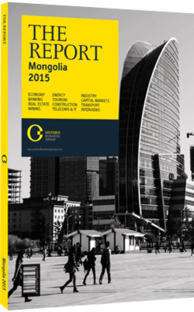An impressive international art sale in Mongolia highlights the country's fine art
When the venerable auction house Sotheby’s put a “very rare and important gilt bronze figure” up for auction in early December 2014 despite protests by the Mongolian government – including a strongly worded letter from the country’s minister of culture, L. Gantumur, claiming that the artwork had been obtained illegally from Mongolia – few people aside from specialists in the international art community had even heard of the artist. Even fewer expected the 17th-century statue of the female Buddhist deity Tara to fetch more than €3m ($4.08m) above its expected asking price of €300,000 ($408,120). But for those who were familiar with Zanabazar and his artwork, sometimes referred to as the Michelangelo of Asia, the seemingly astronomical price tag came as less of a surprise.
Renaissance Man
G. Zanabazar was born in 1635 and lived until 1723. Along with being credited as the father of Mongolian fine arts, he was also an important political and religious leader. In fact, after being identified as a possible saint, he was sent to Tibet at the young age of 14 to study Buddhism under the Dalai Lama. Zanabazar was eventually proclaimed the reincarnation of the Jonangpa line of Tibetan Buddhism, becoming the first Bogd Gegeen, the Buddhist leader of Mongolia.
After returning to the country of his birth, Zanabazar embarked on an ambitious building programme, constructing monasteries and temples in a mix of indigenous styles and those from other parts of Asia. His contribution to the arts was not limited to bricks and mortar, however, as he also became a prolific sculptor.
His hollow brass castings, the most famous of which are the five “Dhyani Buddhas”, a gilt bronze figure of “White Tara”, and “Bodhi Stupa”, express the ideals of philosophy, beauty and mercy, and are considered to be expert fusions of traditional East-Asian representations of Buddhist figures with Mongolian concepts of beauty and historic images of folk deities. The artist’s countrymen are indebted to him in other ways as well. Zanabazar created the soyombo in 1686, the ideogram meaning “self-sprung” that became the national symbol of Mongolia and from which the country’s first script and alphabet were derived. The soyombo itself, which can to this day be found on the national flag, was intended to express the idea that the Mongolian nation exists in its own right and is chockfull of symbolic meaning.
Starting from the top of the figure, the fire represents eternal wealth, growth and success in the past, present and future. The sun and moon symbolise the eternal nature of the Mongolian nation, also known as the land of the blue sky. The two triangles refer to the points of an arrow or spear and the protection of the homeland against exterior and interior enemies. The two horizontal rectangles stand for the honesty and justice of the Mongolian people, both at the top and the bottom of society. The yin-yang symbol represents the complementary nature of man and woman. And finally, the two vertical rectangles are thought to signify the walls of a fort as well as strength and unity, and may relate to a Mongolian proverb: “The friendship of two is stronger than stone walls.”
Renewed Interest
Mongolia has not allowed the sale of Zanabazar’s works since the 1920s and claimed that the one sold in Paris had been stolen from the country. Regardless, the high sales price indicates an awareness of and an interest in Mongolian art outside of the country, where the artist is already highly regarded – there is a whole museum, Zanabazar Museum of Fine Arts, dedicated to his works in Ulaanbaatar. In addition, it mirrors the general revitalisation that the country’s Buddhist traditions have enjoyed since the end of communism in the early 1990s, and which is also apparent in the recent restoration of many of the country’s temples. It is surely only a matter of time before Zanabazar becomes better known outside of Mongolia.
You have reached the limit of premium articles you can view for free.
Choose from the options below to purchase print or digital editions of our Reports. You can also purchase a website subscription giving you unlimited access to all of our Reports online for 12 months.
If you have already purchased this Report or have a website subscription, please login to continue.

